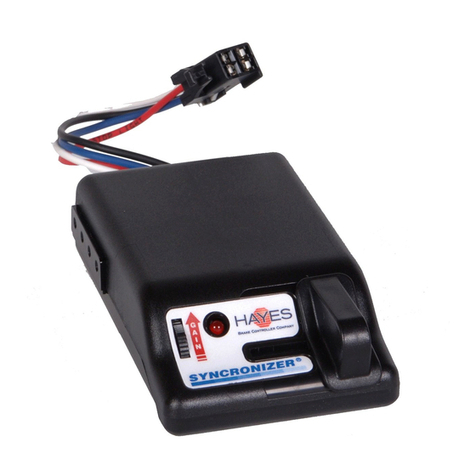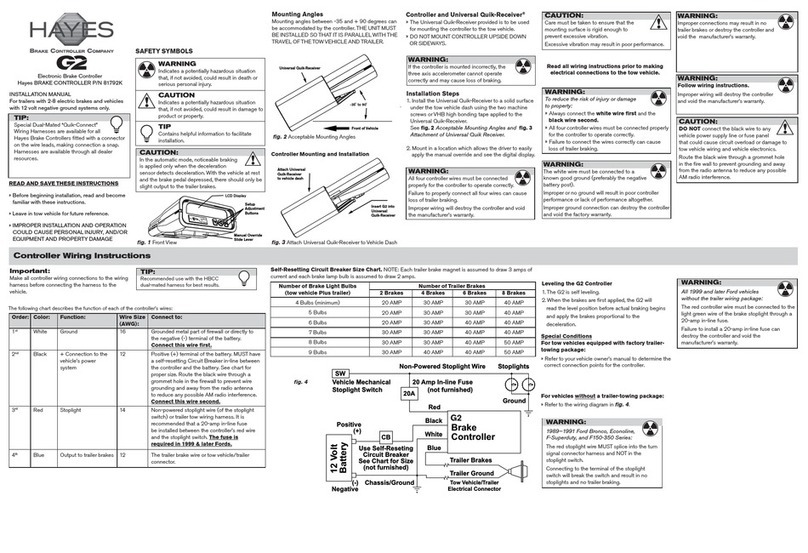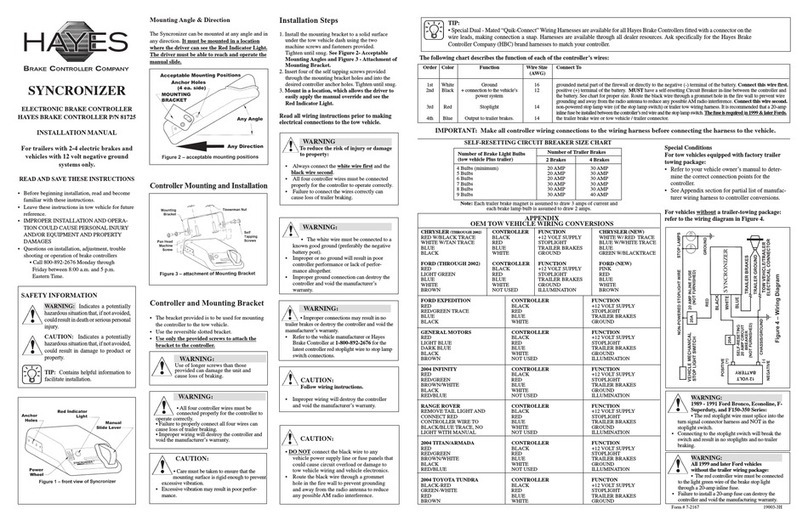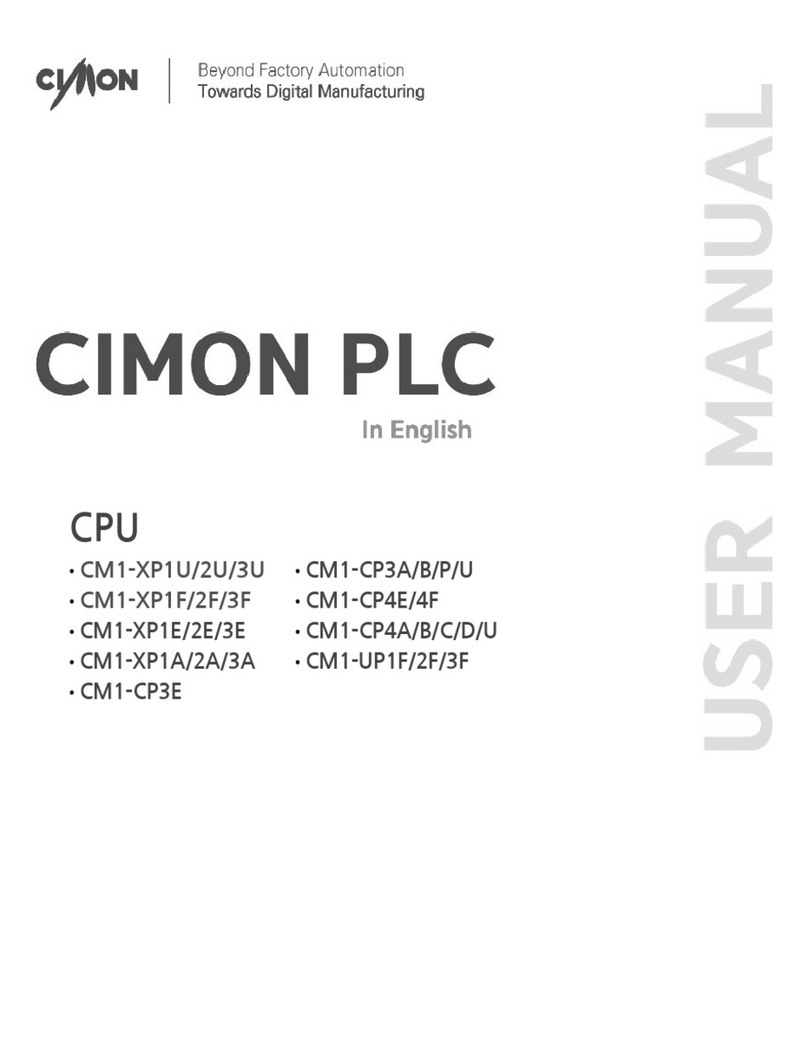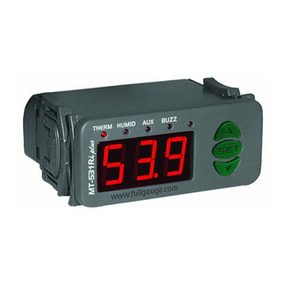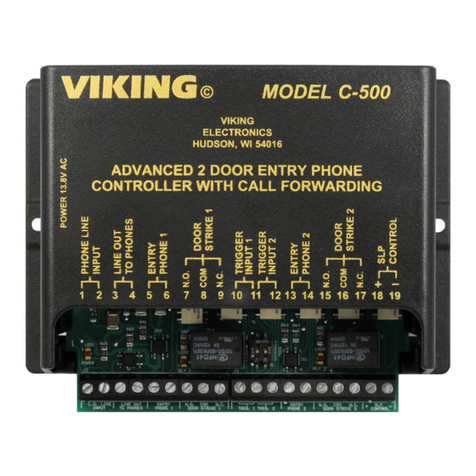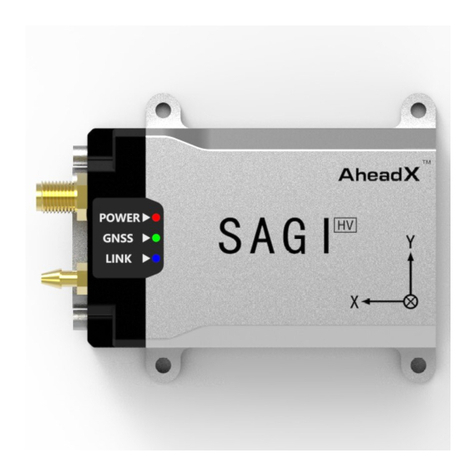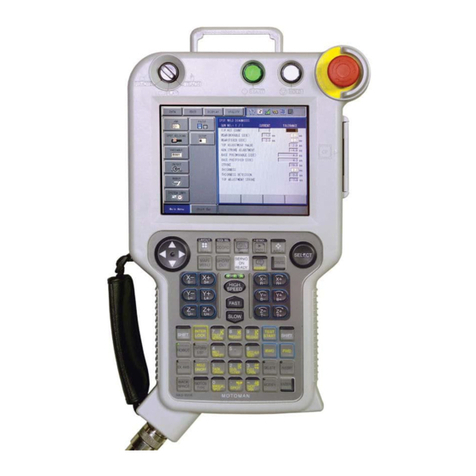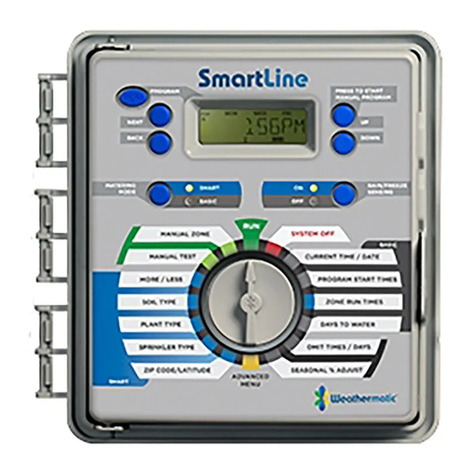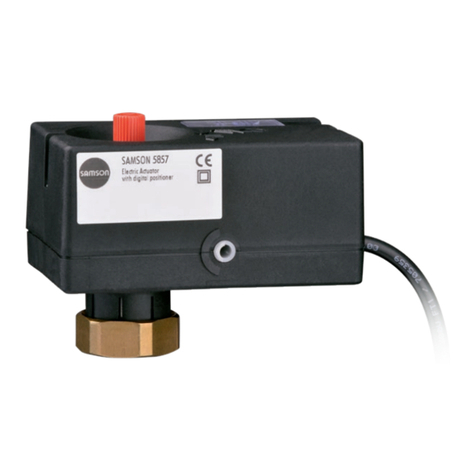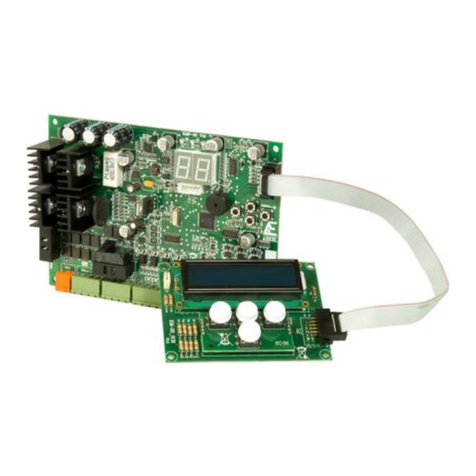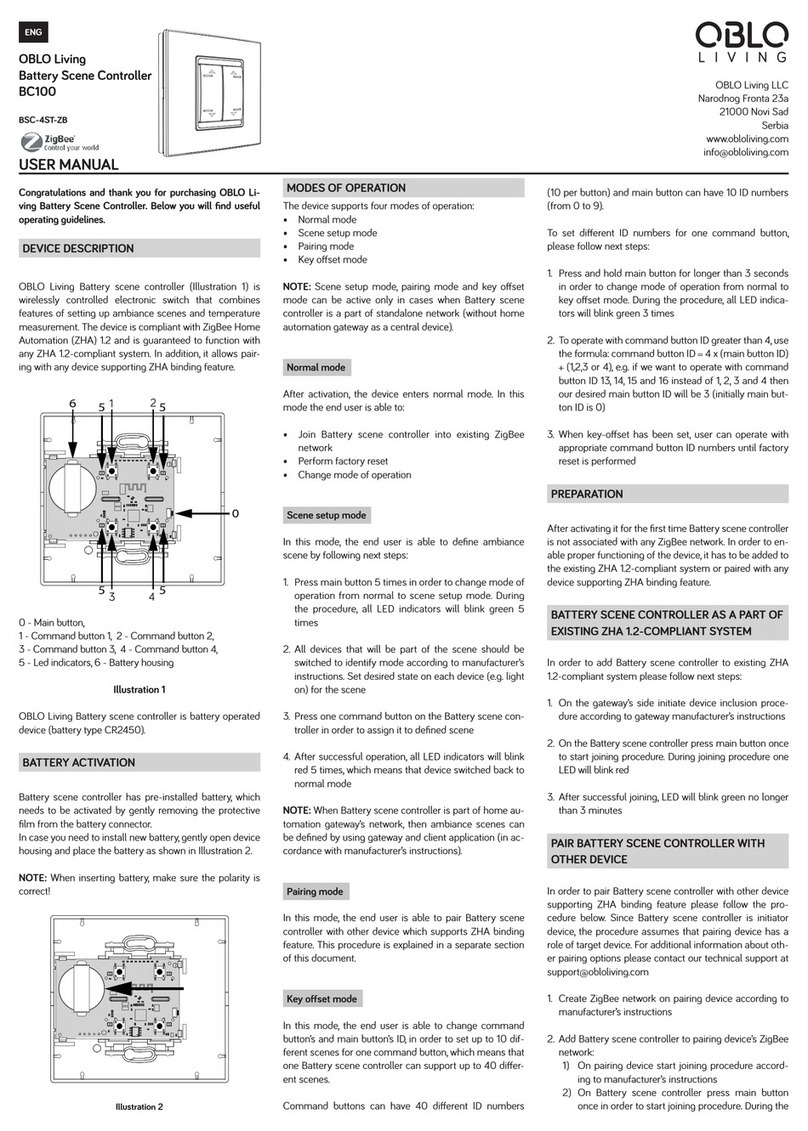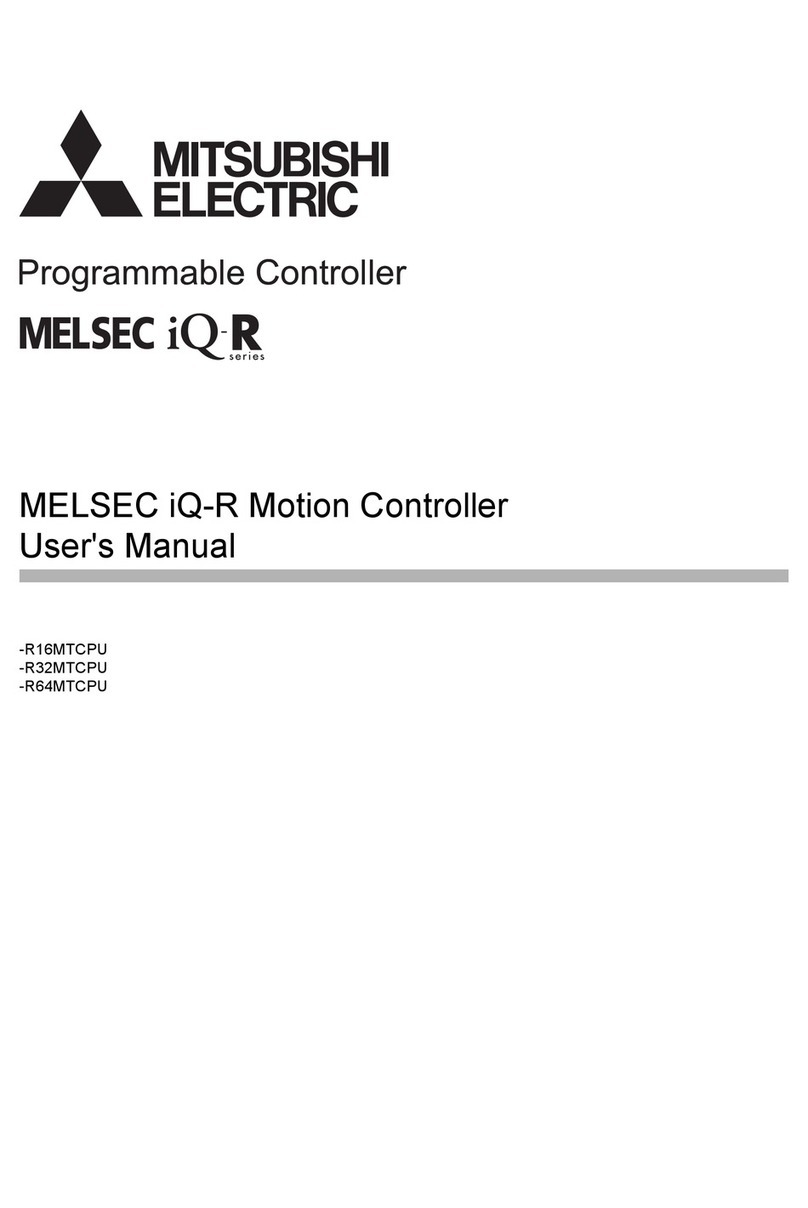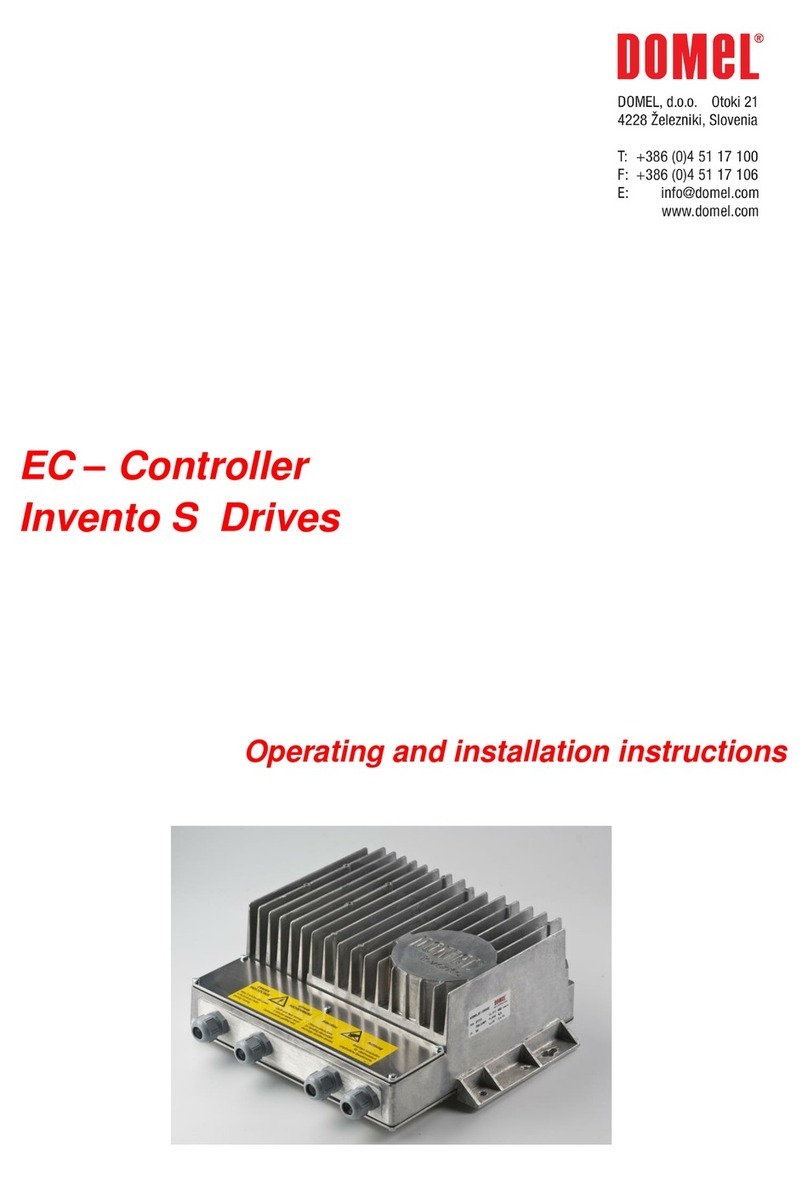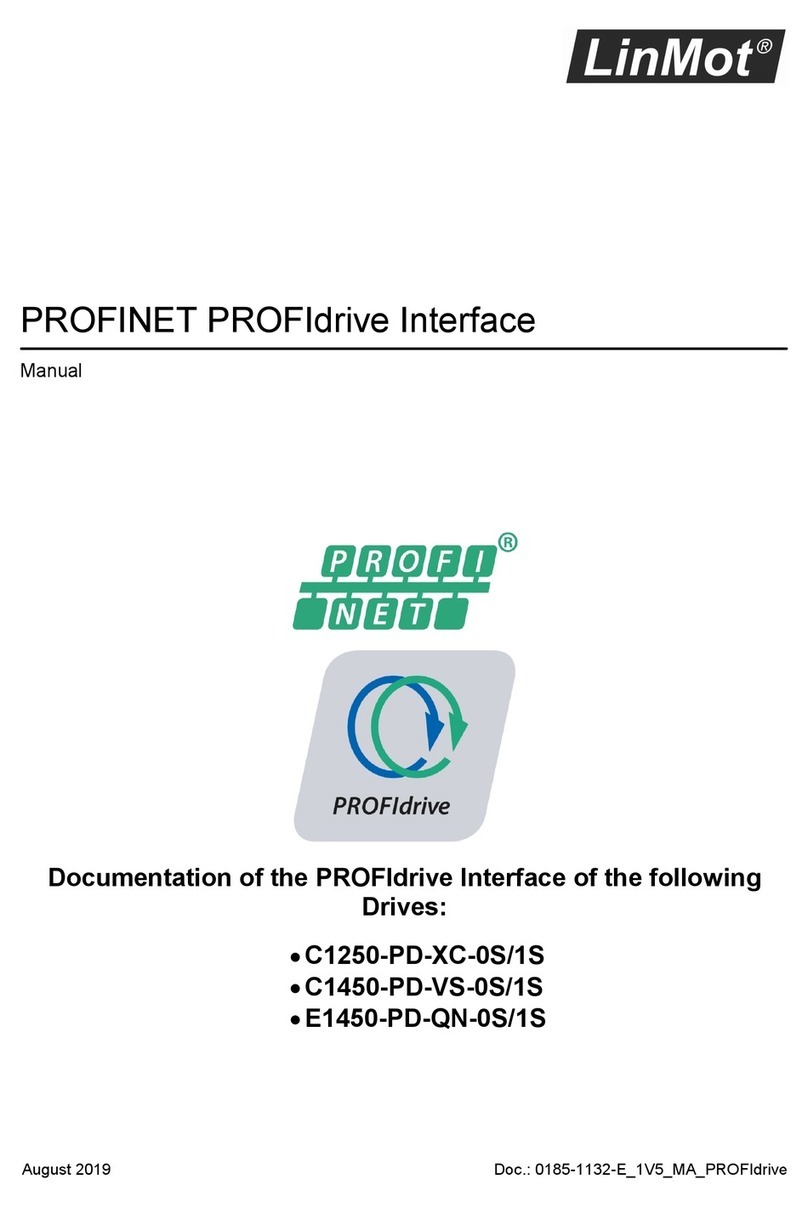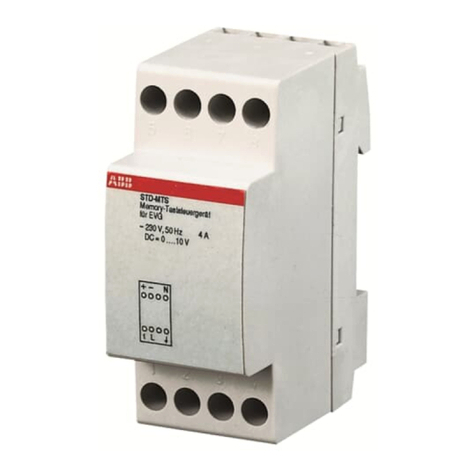Hayes Genesis 81790 User manual

GENESIS
Electronic Brake Controller
Hayes Brake Controller Company - P/N 81790
INSTALLATION MANUAL
For trailers with 2-8 electric brakes and vehicles with 12 volt negative ground systems only.
READ AND SAVE THESE INSTRUCTIONS
•Before beginning installation, read and become familiar with these instructions.
•Leave these instructions in tow vehicle for future reference.
•IMPROPER INSTALLATION AND OPERATION COULD CAUSE PERSONAL INJURY AND/OR
EQUIPMENT AND PROPERTY DAMAGE.
SAFETY INFORMATION
!
!
WARNING: Indicates a potentially hazardous situation that,
if not avoided, could result in death or serious, personal injury.
CAUTION: Indicates a potentially hazardous situation that,
if not avoided, could result in damage to product or property.
TIP: Contains helpful information to facilitate installation.

Installation
Leveling the Genesis Controller
1. The Genesis is self leveling.
2. When the brakes are first applied, the Genesis will read the level position before actual braking
begins and apply the brakes proportional to the deceleration.
Mounting Angle
Mounting angles between –35 and + 90 degrees can be accommodated by the controller. THE
UNIT MUST, HOWEVER, BE INSTALLED SO THAT IT IS PARALLEL WITH THE TRAVEL OF
THE TOW VEHICLE AND TRAILER.
SETUP ADJUSTMENT
BUTTONS
MANUAL
OVERRIDE
SLIDE LEVER
DIGITAL
DISPLAY
ANCHOR HOLES
FOR MOUNTING
Figure 1 – Front View of Genesis
Acceptable Mounting Angles
MOUNTING
BRACKET
FRONT OF VEHICLE
-35 TO 90°
Figure 2 – Acceptable Mounting Angles
CAUTION:
•In the automatic mode and minimum power setting of 5 or 10, the trailer
brakes are applied only when the sensor detects deceleration.
•With the vehicle at rest and the brake pedal depressed, there should be no or
slight output to the trailer brakes (when minimum power is set to 5 or 10).
•Higher at rest outputs and reverse braking can be obtained by increasing the
minimum power setting.
!

Controller Mounting and Installation
Controller and Mounting Bracket
•The bracket provided is to be used for mounting the controller to the tow vehicle.
•Use the reversible slotted bracket.
•DO NOT MOUNT CONTROLLER UPSIDE DOWN OR SIDEWAYS.
Installation Steps
1. Install the mounting bracket to a solid surface under the tow vehicle dash using the two machine
screws and fasteners provided. Tighten until snug. See Figure 2 – Acceptable Mounting
Angles and Figure 3 – Attachment of Mounting Bracket.
2. Insert four of the self tapping screws provided through the mounting bracket holes and into the
desired controller anchor holes. Tighten until snug.
3. Mount in a location, which allows the driver to easily apply the manual override and see
the digital display.
Tinnerman Nut
Self
Tapping
Screws
Pan Head
Machine
Screw
Mounting
Bracket
Mounting
Bracket
Figure 3 – Attachment of Mounting Bracket
WARNING:
•If the controller is mounted incorrectly, the two axis accelerometer cannot
operate correctly and may cause loss of braking.
!
WARNING:
•All four controller wires must be connected properly for the controller to operate
correctly.
•Failure to properly connect all four wires can cause loss of trailer braking.
•Improper wirin
g
will destro
y
the controller and void the manufacturer’s warrant
y
.
WARNING:
•Use of longer screws than those provided can damage the unit and cause loss of
braking.
CAUTION:
•Care must be taken to ensure that the mounting surface is rigid enough to prevent
excessive vibration.
•Excessive vibration may result in poor performance.
!
!
!

Read all wiring instructions prior to making electrical connections to the tow vehicle.
WARNING:
Follow wiring instructions.
•Improper wiring will destroy the controller and void the manufacturer’s warranty.
!
WARNING:
To reduce the risk of injury or damage to property:
•Always connect the white wire first and the black wire second.
•All four controller wires must be connected properly for the controller to operate
correctly.
•Failure to connect the wires correctly can cause loss of trailer braking.
!
WARNING:
•The white wire must be connected to a known good ground (preferably the negative
battery post).
•Improper or no ground will result in poor controller performance or lack of
performance altogether.
•Improper ground connection can destroy the controller and void the manufacturer’s
warranty.
!
WARNING:
•Improper connections may result in no trailer brakes or destroy the controller and
void the manufacturer’s warranty.
!
CAUTION:
•DO NOT connect the black wire to any vehicle power supply line or fuse panel that
could cause circuit overload or damage to tow vehicle wiring and vehicle
electronics.
•Route the black wire through a grommet hole in the fire wall to prevent wire
grounding and away from the radio antenna to reduce any possible AM radio
interference.
!

TIP:
•Special Dual-Mated “Quik ConnectTM” Wiring Harnesses are available for all Hayes Brake
Controllers fitted with a connector on the wire leads, making connection a snap. Harnesses are
available through all dealer resources. Ask specifically for the Hayes Brake Controller Company
(HBC) brand harnesses to match your controller.
Controller Wiring Instructions
The following chart describes the function of each of the controller’s wires:
IMPORTANT: Make all controller wiring connections to the wiring harness before connecting the
harness to the vehicle.
SELF-RESETTING CIRCUIT BREAKER
SIZE CHART
Number of Trailer Brakes
Number of Brake
Light Bulbs (tow
vehicle Plus trailer) 2 Brakes 4 Brakes 6 Brakes 8 Brakes
4 Bulbs (minimum) 20 AMP 30 AMP 30 AMP 40 AMP
5 Bulbs 20 AMP 30 AMP 30 AMP 40 AMP
6 Bulbs 20 AMP 30 AMP 40 AMP 40 AMP
7 Bulbs 30 AMP 30 AMP 40 AMP 40 AMP
8 Bulbs 30 AMP 30 AMP 40 AMP 50 AMP
9 Bulbs 30 AMP 40 AMP 40 AMP 50 AMP
Order Color Function Wire
Size
(AWG)
Connect To
1st White Ground 16 grounded metal part of the firewall or directly to the
negative (-) terminal of the battery. Connect this wire first.
2nd Black + connection
to the
vehicle’s
power system
12 positive (+) terminal of the battery. MUST have a self-
resetting Circuit Breaker in-line between the controller and
the battery. See chart for proper size. Route the black wire
through a grommet hole in the fire wall to prevent wire
grounding and away from the radio antenna to reduce any
possible AM radio interference. Connect this wire
second.
3rd Red Stoplight 14 non-powered stop lamp wire (of the stop lamp switch) or
trailer tow wiring harness. It is recommended that a 20-
amp inline fuse be installed between the controller’s red
wire and the stop lamp switch. The fuse is required in
1999 & later Fords.
4th Blue Output to
trailer brakes 12 the trailer brake wire or tow vehicle / trailer connector.
Note: Each trailer brake magnet is assumed to draw 3 amps of current and
each brake lamp bulb is assumed to draw 2 amps..

Special Conditions
For tow vehicles equipped with factory trailer towing package:
•Refer to your vehicle’s owner’s manual or other information provided by the manufacturer in determining the correct
connection points for the controller.
•See Appendix section for partial list of manufacturer wiring harness to controller conversions.
For vehicles without a trailer-towing package: refer to the wiring diagram in Figure 4.
NON-POWERED STOPLIGHT WIRE
SELF-RESETTING
CIRCUIT BREAKER
(NOT FURNISHED)
SEE CHART FOR SIZE
C.B.
POSITIVE
(+)
(-)
NEGATIVE
BATTERY
12 VOLT
20A
VEHICLE MECHANICAL
STOPLIGHT SWITCH
SW
BRAKE
CONTROLLER
TOW VEHICLE / TRAILER
ELECTRICAL CONNECTOR
TRAILER GROUND
TRAILER BRAKES
BLUE
GROUND
STOP LAMPS
20 AMP INLINE FUSE
(NOT FURNISHED)
WHITE
BLACK
RED
CHASSIS
GROUND
Figure 4 – Wiring Diagram
WARNING:
All 1999 and later Ford vehicles without the trailer wiring package:
•The red controller wire must be connected to the light green wire of the brake
stop lamp through a 20-amp inline fuse.
•Failure to install a 20-amp inline fuse can destroy the controller and void the
manufacturing warranty.
!
WARNING:
1989-1991 Ford Bronco, Econoline, F-Superduty, and F150-350 Series:
•The red stoplight wire MUST splice into the turn signal connector harness and
NOT to the stoplight switch.
•Connecting to the terminal of the stoplight switch will break the switch and result
in no stoplights and no trailer braking.
!

Appendix OEM TOW VEHICLE WIRING CONVERSIONS
CHRYSLER (THROUGH 2002) CONTROLLER FUNCTION CHRYSLER (NEW)
RED W/BLACK TRACE BLACK +12 VOLT SUPPLY WHITE WITH RED TRACE
WHITE W/TAN TRACE RED STOPLIGHT BLUE WITH WHITE TRACE
BLUE BLUE TRAILER BRAKES BLUE
BLACK WHITE GROUND GREEN W/BLACK TRACE
FORD (THROUGH 2002) CONTROLLER FUNCTION FORD (NEW)
RED BLACK +12 VOLT SUPPLY PINK
LIGHT GREEN RED STOPLIGHT RED
BLUE BLUE TRAILER BRAKES BLUE
WHITE WHITE GROUND WHITE
BROWN NOT USED ILLUMINATION BROWN
FORD EXPEDITION CONTROLLER FUNCTION
RED BLACK +12 VOLT SUPPLY
RED/GREEN TRACE RED STOPLIGHT
BLUE BLUE TRAILER BRAKES
BLACK WHITE GROUND
GENERAL MOTORS CONTROLLER FUNCTION
RED BLACK +12 VOLT SUPPLY
LIGHT BLUE RED STOPLIGHT
DARK BLUE BLUE TRAILER BRAKES
BLACK WHITE GROUND
BROWN NOT USED ILLUMINATION
2004 INFINITY CONTROLLER FUNCTION
RED BLACK +12 VOLT SUPPLY
RED/GREEN RED STOPLIGHT
BROWN/WHITE BLUE TRAILER BRAKES
BLACK WHITE GROUND
RED/BLUE NOT USED ILLUMINATION
RANGE ROVER CONTROLLER FUNCTION
REMOVE TAIL LIGHT AND BLACK +12 VOLT SUPPLY
CONNECT RED RED STOPLIGHT
CONTROLLER WIRE TO BLUE TRAILER BRAKES
BLACK/BLUE TRACE, NO WHITE GROUND
LIGHT WITH MANUAL NOT USED ILLUMINATION
2004 TITAN/ARMADA CONTROLLER FUNCTION
RED BLACK +12 VOLT SUPPLY
RED/GREEN RED STOPLIGHT
BROWN/WHITE BLUE TRAILER BRAKES
BLACK WHITE GROUND
RED/BLUE NOT USED ILLUMINATION
2004 TOYOTA TUNDRA CONTROLLER FUNCTON
BLACK-RED BLACK +12 VOLT SUPPLY
GREEN-WHITE RED STOPLIGHT
RED BLUE TRAILER BRAKES
BROWN WHITE GROUND

GENESIS
Electronic Brake Controller
Hayes Brake Controller Company - P/N 81790
OPERATION MANUAL
For trailers with 2-8 electric brakes and vehicles with 12 volt negative ground systems only.
READ AND SAVE THESE INSTRUCTIONS
•Before beginning installation, read and become familiar with these instructions.
•Leave these instructions in tow vehicle for future reference.
•IMPROPER OPERATION COULD CAUSE PERSONAL INJURY AND/OR EQUIPMENT AND
PROPERTY DAMAGE.
SAFETY INFORMATION
!
!
WARNING: Indicates a potentially hazardous situation that,
if not avoided, could result in death or serious, personal injury.
CAUTION: Indicates a potentially hazardous situation that,
if not avoided, could result in damage to product or property.
TIP: Contains helpful information to facilitate operation.

Automatic Operation
During braking, the Genesis senses deceleration of the tow vehicle. An internal sensor measures the
amount of deceleration and sends a proportional amount of power to the trailer brakes. The maximum
braking supplied depends on the set up of the controller. The digital display will indicate the amount of
power being sent to the trailer brakes. Once the brake pedal is released, the unit will return to “stand by”
mode. While standing by, the controller will display the currently selected mode of display (% power,
voltage, or current). Further explanation of these modes is included in this document.
SETUP ADJUSTMENT
BUTTONS
MANUAL
OVERRIDE
SLIDE LEVER
DIGITAL
DISPLAY
ANCHOR HOLES
FOR MOUNTING
Figure 1 – Front View of Genesis
Digital Display
The digital display shows various symbols and numbers that are used for set up and to monitor the
trailer brake performance. It is also used when trouble-shooting.
Controller Features and Settings
The controller features the following options, selections and settings.

Definitions of Options
Option Available Selections Change procedure
P : % of available power being
sent to trailer brakes (PH for
hydraulic actuators)
E : Voltage (DC) being sent to
trailer brakes (EH for hydraulic
actuators)
Display Mode
(P is the
default mode.
This mode
should be
used unless
PH mode is
required.)
C : Current (DC) being applied
to trailer brakes
•
•
•
•
•
Press “+” button until the display flashes and release
Display mode will flash (P, E, C, PH, or EH)
Press “+” button to cycle through optional display modes
When desired display mode is displayed, press “–“ button until
flashing stops and release
The new display mode is now set
Note: PH or EH modes do not check for trailer connection and will
not display “OC”
Minimum
Power
(Automatic
Braking
only)
(10% is the
factory default
setting.)
5, 10, 15, 20, or 25
•
•
•
•
•
•
•
Press “-” button until the display flashes and release
Minimum power will flash either 5, or 10, or 15, or 20, or 25
Press “-” button to cycle through optional settings
When desired percentage is displayed, press “+“ button until
flashing stops and release
The new Minimum Power is now set
The newly selected value will be displayed for several seconds
After several seconds, the display will revert back to showing
the display mode (P, E, C, PH, or EH)
Maximum
Power (Gain)
(50% is the
factory default
setting.)
5% increments from the set
Minimum Power setting to
100%. 100% is displayed as
“99.”
•
•
•
•
Press “+” or “-“ button and release
The current power setting will be displayed
To raise the displayed power setting, press “+” button and
release
To lower the displayed power setting, press “-“ button and
release. When no change is made for several seconds, the
displayed power setting will be stored as the current Maximum
Power. The display will revert back to showing the display
mode (P, E, C, PH, or EH) and stores the last selected power
setting
The following is a list of potential trouble codes. Refer to the installation guide for complete explanation of the codes
Display Code Possible Cause
SC Short Circuit This indicates a direct short to ground in the blue wire (output)
circuit.
CL Current Limit
Indicates that the brake controller is providing more than its
maximum rated power.
OC Open Circuit
Indicates that there is no trailer connection detected or trailer has
Electric/Hydraulic brakes.
HF Hazard Flash Will display while hazard flashers are on.
bF Voltage on blue wire Blue wire connected to wrong place, short in wiring / connector,
faulty or disconnected breakaway switch.
Brake Controller Item # 81790
Quick Reference

WARNING:
•Improper adjustment of the controller could result in loss of trailer brakes,
aggressive, grabby, pulsating, or delayed trailer brakes.
•Power adjustments may be required based upon speed, trailer load, and road
conditions.
•Maximum trailer braking occurs just prior to lockup of the trailer wheels.
•Trailer brake lockup could cause loss of control of the trailer and / or the tow
vehicle.
!
Display mode:
The controller is factory pre-set to display mode P (% of maximum power)
•During braking conditions - the number displayed indicates the % of power being applied to
the trailer brakes. The scale for this is “10”-“99.”
•It is recommended that display mode P (or PH for a hydraulic actuator) be used while
operating the vehicle.
PH mode also displays the % of power being applied to the trailer brakes. The scale for this is “10”-
“99.”
Other available display modes:
•Voltage (E or EH) can be used in operation, but it should be noted that the actual voltage
supplied to the trailer brakes may vary from the displayed value by as much as 1 Volt.
•Current (C) reading can be used in troubleshooting and setup to ensure that the amperage
draw of the trailer brakes is in the proper range based on the number of axles on the trailer
DO NOTuse this setting while operating the vehicle. With the manual fully on,
the brake coils should draw approximately 3 amps each.
DO NOTmake current readings with the manual less than full on.
The current reading may vary significantly due to temperature changes in the
brake magnets.
Changing Display Mode
The symbols (P, E, C, PH, or EH) that are displayed under non-braking conditions may be changed as
follows: With the vehicle at rest1. , press the “+” button until the display flashes and release. The
display will flash a letter, which corresponds to the set display mode (P, E, C, PH, or EH).
2. To change the set mode, press the “+” button and release. The display will change from P to E
to C to PH to EH with sequential presses of the “+” button.
3. Continue pressing the “+” button until the desired display mode is shown on the display.
4. Press the “-“ button and hold until display stops flashing and release.
5. The new display mode is now set.
Notes: A. The P display mode is the factory default mode and is the recommended display mode.
If the trailer has an Electric over Hydraulic Actuator, the PH display mode is
recommended.
B. The PH and the EH display modes do not test for a trailer connection.

C. After a few hours of being inactive (with a trailer connected), the display will go blank.
While the display is blank, very little power will be used by the Genesis.
Minimum Power: (for Manual and Automatic operation)
CAUTION:
•In the automatic mode and minimum power setting of 5 or 10, the trailer
brakes are applied only when the sensor detects deceleration.
•With the vehicle at rest and the brake pedal depressed, there should be no or
slight output to the trailer brakes (when minimum power is set to 5 or 10).
•Higher at rest outputs and reverse braking can be obtained by increasing the
minimum power setting.
!
The controller is factory pre-set to 10%. At this setting, the MINIMUM amount of power that will be
immediately applied to the trailer brakes is 10% (when the brake pedal is depressed and before
deceleration is detected).
Changing Minimum Power (Manual and Automatic)
Changing the minimum power level is designed to allow more or less power to be delivered to the
brakes when the controller does not sense deceleration. See the section for loaded trailer weight
guidelines on the last page of this document. Select the minimum power setting required for your
loaded trailer weight.
The minimum power level may be changed in 5% increments (5, 10, 15, 20, and 25)
To do this, follow these steps:
With the vehicle at rest1. , press the “-” button until the display flashes then release the button.
The display will flash a number, which corresponds to the set minimum power as a percentage
of total available power (5, 10, 15, 20, and 25).
2. To change the set value, press the “-” button and release. The display will change to the next
highest available value with sequential presses of the “-” button.
3. Continue pressing the “-” button until the desired minimum power level is displayed on the
display.
4. Press the “+“ button until display stops flashing and release.
5. The new minimum power level is now set.
NOTE: The higher the minimum power setting the more aggressive the braking. A setting
of 5 will delay the braking output a small amount.

Maximum Power (for Automatic braking only):
The controller is factory pre-set to 50%. When the controller senses maximum deceleration, the most
power that the controller will send to the trailer brakes will be 50%.
Changing Maximum Power for Automatic operation only (Manual operation is not
affected)
Note: To change the maximum power level, the controller must be in “normal” operating mode.
The maximum power may be changed from the default 50% value by doing the following:
With the vehicle at rest1. , press either the “+” or “-“ button momentarily and release. The set maximum
power will be displayed.
2. While this maximum power value is displayed, press either the “+” (increase) or “-“ (decrease)
button to make changes to the power setting. The power percentage will change in increments
of 5% with each sequential button push.
3. The controller is instantly set to the newly displayed value.
4. When no button has been pressed for several seconds, the system will become idle and the
display will change to Display mode (P, E, C, PH, or EH).
NOTE: when the value reaches 100%, the display will read “99.”
Manual Slide Lever Operation
WARNING:
Manual operation via the manual slide lever may not disengage the Cruise Control
on some vehicles.
!
•The “Manual Slide Lever” (Figure 1) is located on the front right side of the controller.
•The further the manual slide lever is moved from the right to the left, the greater the amount of
trailer braking power.
•The manual slide lever operation is an independent circuit and overrides the maximum power
setting to allow full braking power when required.
•The manual slide lever is used to apply the trailer brakes independently of the tow vehicle brakes
or to override the automatic trailer brakes when more braking is required.
•The manual slide lever is used in emergency stop situations when more braking may be required
than is available with the maximum power setting or for control of excessive trailer sway.
•The tow vehicle and trailer brake stoplights will be illuminated during the manual lever activation.
TIP:
It is normal to hear the trailer brake magnets “hum” when operating the trailer
brakes.

Troubleshooting using the manual slide
To verify the brake controller is properly wired, follow these steps:
A. Disconnect the tow vehicle/trailer electrical connector. Set the display mode to PH. Move the
manual slide lever (Figure 1) to the left. The displayed value should increase and the tow vehicle
stop lamps must illuminate.
B. If SC is displayed, the tow vehicle has a short to ground in the trailer brake circuit or the white
ground wire is not connected to ground. Check and/or repair wiring and tow vehicle/trailer
connector.
C. If the stop lamps do not illuminate, check the red stoplight wire connection of the brake controller
for connections to the non-powered stop lamp wire of the vehicle stop lamp switch. Set the
display mode to P if trailer does not have electric/hydraulic brakes.
D. Connect the tow vehicle/trailer electrical connector.
E. If the display flashes OC, check and repair blue wire connections and brake coil connections. The
controller does not see a brake coil connection.
F. Move the manual lever to the left. The displayed value should increase and the trailer stop lamps
must illuminate.
G. If SC or CL is displayed, check the trailer brake magnets and trailer brake circuit (including the
tow vehicle/trailer connector) for a short to ground.
H. If the trailer stop lamps do not illuminate, check and repair trailer wires, bulbs, bulb ground
connections, and the tow vehicle/trailer connector.
I. Also check the red stop light wire connection of the brake controller for connections to the non-
powered stop lamp wire of the vehicle stop lamp switch.
Road Test and Performance Adjustment
To set the controller up for optimum performance with your tow vehicle / trailer combination, follow these
steps:
A. Position the tow vehicle and trailer on a hard, flat, dry surface.
B. Set the display mode to % power (P or PH for Hydraulic Actuator). See “Changing Display
Mode” section.
C.Adjust the power setting to 50% using the instructions in the “Changing Maximum Power”
section.
D.Accelerate to approximately 25 mph and apply the brakes in a normal manner. The vehicle
should come to a stop without the trailer “pushing” the tow vehicle. A firm braking action should
occur.
E. If the trailer brakes lock, decrease the power level.
F. If more braking power is needed, increase the power level.
G.Repeat this process until the desired amount of braking is achieved.
H.If needed, follow the instructions in the “Changing Minimum Power” section to increase or
decrease the minimum power. The following guidelines should be used as a starting point for
selecting this option: If the Loaded Trailer weight is… Then set the Minimum Power to:
Much less than the tow vehicle 5
Less than the tow vehicle 10
Roughly equal to the tow vehicle 10 or 15
Slightly greater than the tow vehicle 15 or 20
Much greater than the tow vehicle 20 or 25

TIP:
•Warm trailer brakes tend to be more responsive than cold brakes.
There are two methods of adjusting the output and responsiveness of the Genesis Brake Controller.
They are listed here in the order in which they should be modified:
1.Maximum Power Adjustment: The power is adjustable from 10% to 100% (if minimum power is
set at 5 or 10). This figure is based on the amount of power available for delivery to the trailer
brakes. The total amount of power available is determined by the size and condition of the
vehicle’s charging system.
2.Minimum Power Adjustment: - Changing the minimum power level is designed to allow more or
less power to be delivered to the brakes. The initial power compensates for varying load
conditions, larger trailers, and heavier loads. The initial braking (before deceleration is detected)
can eliminate the feeling of being pushed by the trailer or aggressive braking.
CAUTION:
•In the automatic mode and minimum power setting of 5 or 10, the trailer
brakes are applied only when the sensor detects deceleration.
•With the vehicle at rest and the brake pedal depressed, there should be no or
slight output to the trailer brakes (when minimum power is set to 5 or 10).
•Higher at rest outputs and reverse braking can be obtained by increasing the
minimum power setting.
!
Troubleshooting using the display
The Digital Display will “flash” a symbol to indicate a problem with the trailer, the tow vehicle, or the
brake controller.
Short Circuit:
The display will flash “SC”. This indicates that the controller has sensed a direct short between the
controller’s output and ground. This condition must be cleared before the controller is used.It is
usually an indication that a “hot” wire is connected to ground.
Current Limit:
The display will flash “CL”. This indicates that the controller has sensed a power requirement greater
than its recommended output. When this occurs, the controller will continue to supply all of the
needed current (up to approximately 32 amps). This could result from an intermittent short to ground
in the trailer wiring, a faulty brake coil, or too many brake coils connected to the controller.

Open Circuit:
The display will flash “OC”. This is an indication that there is no trailer connected to the tow vehicle.
Flashing “OC” will display for a few minutes or until a trailer is connected to the tow vehicle.
Connection to electric over hydraulic trailer brakes can also cause the display to flash “OC”. The
display will go blank when no load is detected for several minutes. If a trailer with electric over
hydraulic brakes is connected and “OC” is flashing, change the display mode to PH or EH.
TIP:
•If “OC” is flashing (with no trailer connected), the display will turn-off after
several minutes.
TIP:
•If a trailer with electric over hydraulic brakes is connected and “OC” is
flashing, change the display mode to PH or EH. PH is recommended.
TIP:
•During the time that the controller senses the Hazard Flash, no power will
be sent to the trailer brakes. Therefore, there should be no pulsing of the
brakes.
Hazard Flash:
The display will flash “HF”. This occurs when the controller senses a distinct cycling of power in the
brake light circuit. The controller will continue to display “HF” until the cycle is broken either by a
braking event or a discontinuation of the power cycling.
Blue Wire Fault:
The display will flash “bF”. This occurs when external voltage is detected on the blue wire. The
controller will continue to display “bF” until external voltage is removed. Possible causes can be the
blue wire being connected to the wrong place, a short in the wiring or the connector, or a faulty or
disconnected breakaway switch.

Troubleshooting
Symptom Possible Cause Remedy
Maximum power set too high Reduce maximum power settingTrailer Brakes “Lock Up” Minimum power set too high Reduce minimum power setting
Maximum power set too low Increase maximum power settingLow output to trailer
brakes Minimum power set too low Increase minimum power setting
Overloaded trailer Check weight rating
Loose or poor quality
connections Inspect connections / check with
meter
Weak / Ineffective Brakes
Insufficient wire gauge Inspect / replace
Improper Wiring Check color codes of all wires.No output to trailer brakes
(manual or automatic)
Improperly grounded Ensure that the following are
grounded:
•
•
•
•
Controller (white wire)
Tow vehicle connector
Trailer umbilical cord
Each brake magnet
No output to trailer brakes
(automatic only) Faulty Brake Light Circuit on
tow vehicle Troubleshoot / repair brake light
circuit
Improperly grounded Check and repair all ground
connections
Out of Round brake drums Repair / replace
Intermittent or surging
brakes
Worn wheel bearings Repair / replace
Direct short to ground either in
tow vehicle wiring or in trailer
wiring.
Inspect and repair wiringNo output to trailer brakes,
display reads “SC” when
brakes are applied Faulty brake magnets Test / replace brake magnets
Too many brake magnets are
attached to controller Controller only handles 1-4 axles
with brakes.
Intermittent short to ground in
tow vehicle or trailer wiring Inspect and repair wiring
Reduced output to trailer
brakes, display reads “CL”
when brakes are applied
Defective brake magnets Test / replace brake magnets
Trailer brakes lock up
when trailer connector
cable is attached.
Faulty breakaway switch Test / replace switch
Controller displays flashing
“bF” Indicates presence of an
unexpected 12 Volts on the blue
(output) wire due to one of the
following:
Inspect wiring and breakaway
switch. Ensure that there is no
voltage on the blue wire when the
brake pedal is not depressed.

•Faulty wiring
•Malfunctioning or
disconnected break-away
switch
No trailer connected Flashing will stop in a few minutes
Trailer with Electric over
Hydraulic actuator attached Change Display mode to PH or EH
Note: These two modes do not
check for a trailer connection.
Controller displays flashing
“OC”
Note: If the display mode
is set to PH or EH, the
controller will not check for
a trailer connection and
will not flash “OC”.
Blue controller wire not
connected to correct wire Inspect and repair wiring
Find out more about trailer hitches and towing we have.
Table of contents
Other Hayes Controllers manuals
